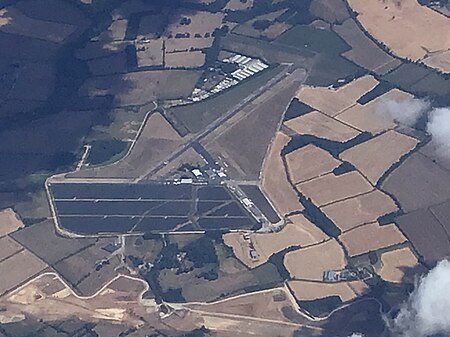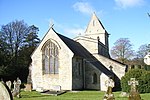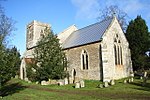Turweston Aerodrome

Turweston Aerodrome (ICAO: EGBT) is an airfield located near the village of Turweston, in north Buckinghamshire near the Northamptonshire border. It is a former Royal Air Force Second World War bomber training facility, now a business park and airfield which is home to the Light Aircraft Association.Turweston Aerodrome is no longer licensed by the CAA as of August 2015. It previously held an Ordinary Licence (Number P750) that allowed flights for the public transport of passengers or for flying instruction. It is not licensed for night use. The main runway is 09/27 and tarmac with a parallel grass runway available that doubles as a taxiway for the majority of the time. There is an additional grass cross runway that is used also as a taxiway and as additional parking for events orientation of 03/21. Radio communication services are provided by Turweston Air/Ground on 122.180 MHz.
Excerpt from the Wikipedia article Turweston Aerodrome (License: CC BY-SA 3.0, Authors, Images).Turweston Aerodrome
Geographical coordinates (GPS) Address Nearby Places Show on map
Geographical coordinates (GPS)
| Latitude | Longitude |
|---|---|
| N 52.040833333333 ° | E -1.0977777777778 ° |
Address
NN13 5TD
England, United Kingdom
Open on Google Maps







